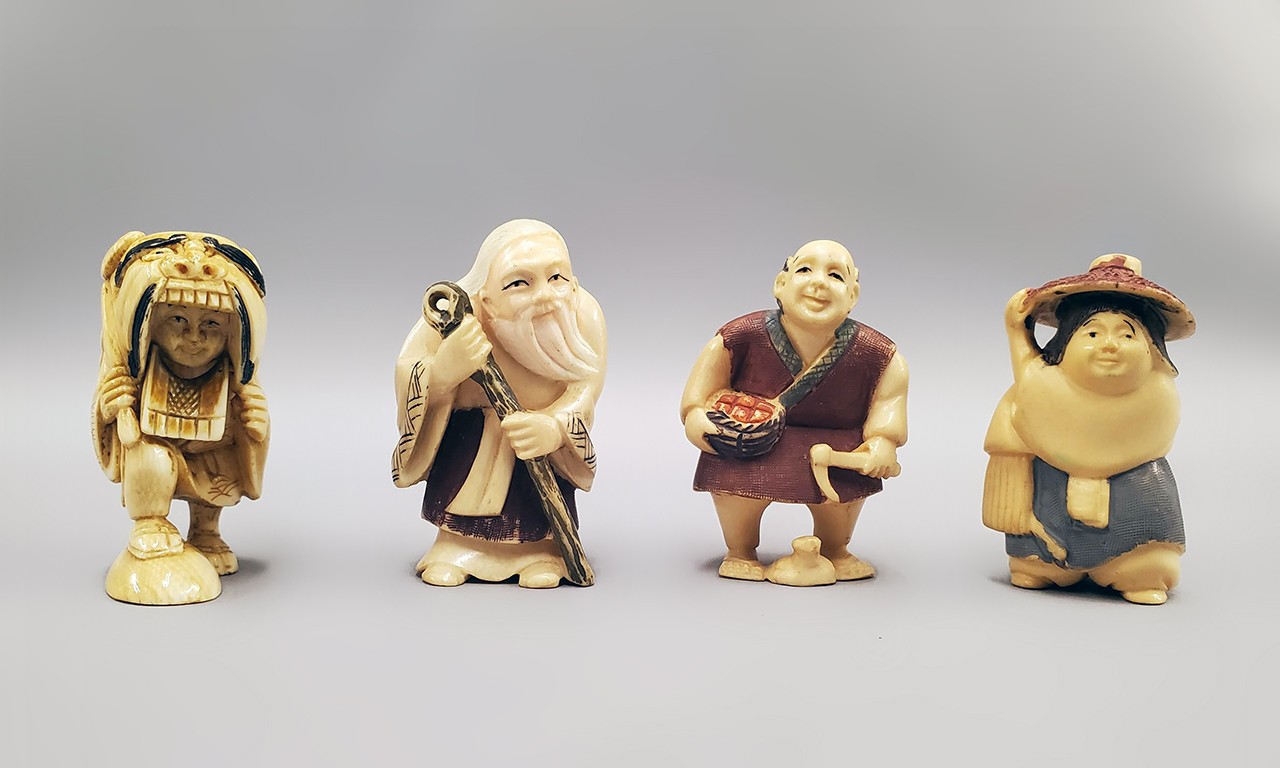 |
Group of Figural Netsuke, 20th Century
Japan
Ivory and pigments
88.31.280-.31
Gift of City of Los Angeles Department of Recreation and Parks |
Obi One
Clothing not having pockets is an annoyance that inevitably demands some creative solution; be it a purse, backpack, or fanny pack—the ultimate marriage of style and comfort in object toting. In Japan’s Edo period (1603-1868), a lack of storage space in the form of pockets was a uniform issue. Items could be tucked away in the folds of kimono sleeves, but the best mode of carrying items involved taking a container, tying a cord to it which would run underneath a belt sash or obi, and then having a toggle at the top to hold the cord in place. This post is not about the containers themselves, but the whole universe that grew around the toggles: an artform that is now known as netsuke. This post looks at a selection of Bowers netsuke through the lens of their symbolism, history and how the carvings have persisted as an art form even after their functional redundancy.
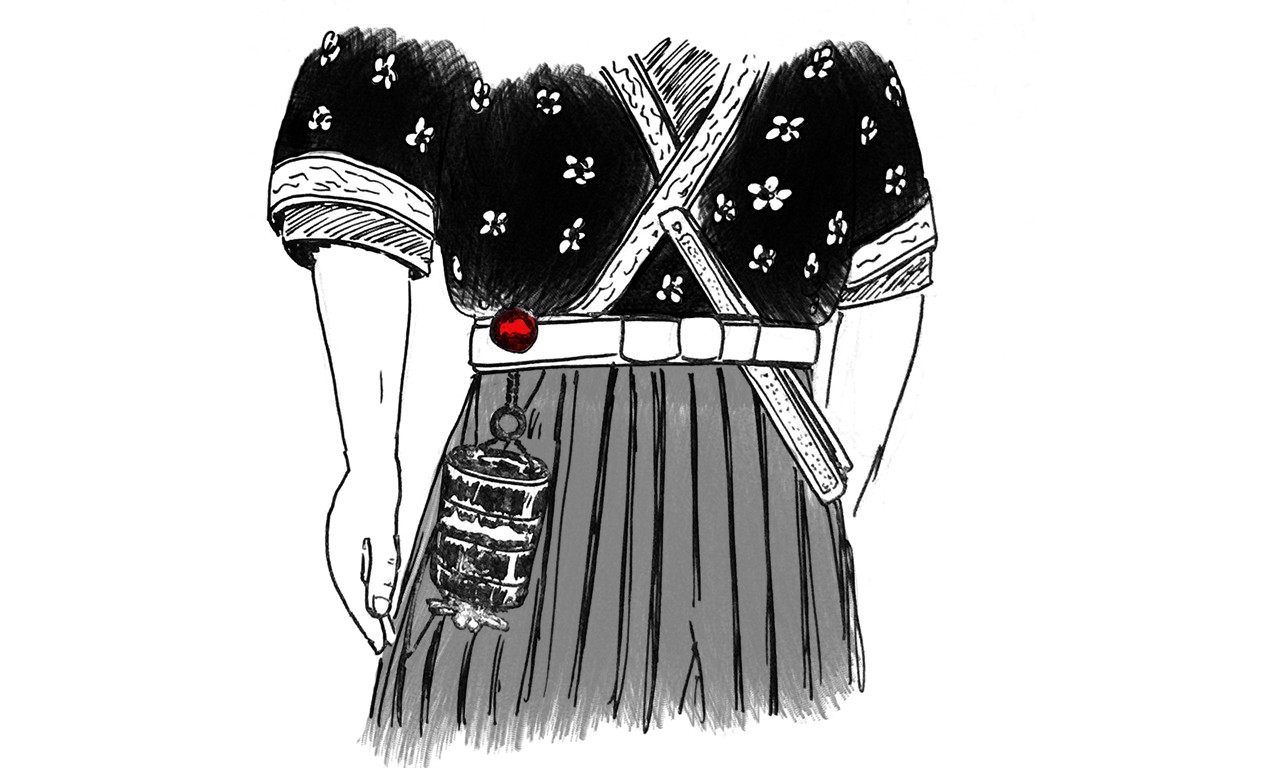 |
| Illustration showing how netsuke (red) were worn. By Rama licensed under CC BY-SA 2.0 fr |
To Affix One’s Problems
The use of toggles in Japan dates to the Muromachi period (1335-1568) when undecorated examples made of wood were first used to suspend gourds, pouches, and keys from one’s obi. The word netsuke was likely coined at this time and roughly translates to “root that affixes,” a reference to both the leading medium and function. It was not until the end of Japan’s Age of Warring States that policies were put in place which would—contrary to their intent—spur the creation of more intricate netsuke. Tokugawa Ieyasu, the king of the hill of Japanese unification, began enforcing relative conservatism in dress due to his Neo-Confucian belief that artisans and merchants rated below warriors and peasants. He also forced the families of all feudal lords to live in the capital city of Edo (now Tokyo). Seeking a way to discretely show one’s status, netsuke first began to evolve among the families of the political elite and were gradually adopted by samurai and city dwellers.
|
|
Group of Zoomorphic Netsuke, 19th to 20th Century
Japan
Ivory and pigments
88.31.10, 2005.9.1, 2005.9.10, 2005.9.55
Gifts of City of Los Angeles Department of Recreation and Parks and Cleo M. Stater |
In the Round
The only specifications for netsuke were determined by their function. Usually this meant rounded shapes with one flat side that a string could be run through, the result being that they would not jostle when moved or snag clothing. Fairly early into their production craftsmen began to make them out of ivory from China imported by Dutch traders. Later examples are crafted in metal, bone, porcelain, lacquer, and cloisonné. Netsuke also quickly took on a whole host of subjects drawn from Japanese religion, flora, fauna, and daily life. Most of the Bowers’ netsuke collection depicts animals, many of which are from the Japanese zodiac. Horses, rats, dogs, dragons, snakes, roosters, and goats all feature, but many other animals both mythical like the wooden Komainu and bona fide like the ivory octopus appear too. Rats are especially common as they are also representative of Daikokuten, the god of wealth. In many cases multiple animals from the zodiac might be featured together, often operating as tableaus with complex relationships. Two or three approximately comma-shaped animals together visually represent the symbol most know as yin and yang usually are symbolically representative of duality and balance. Masks and faces also appear with relative frequency, though the example featured in this post is likely more recent. With ivory netsuke, detailing with sumi ink or painting was a common way to finish a piece.
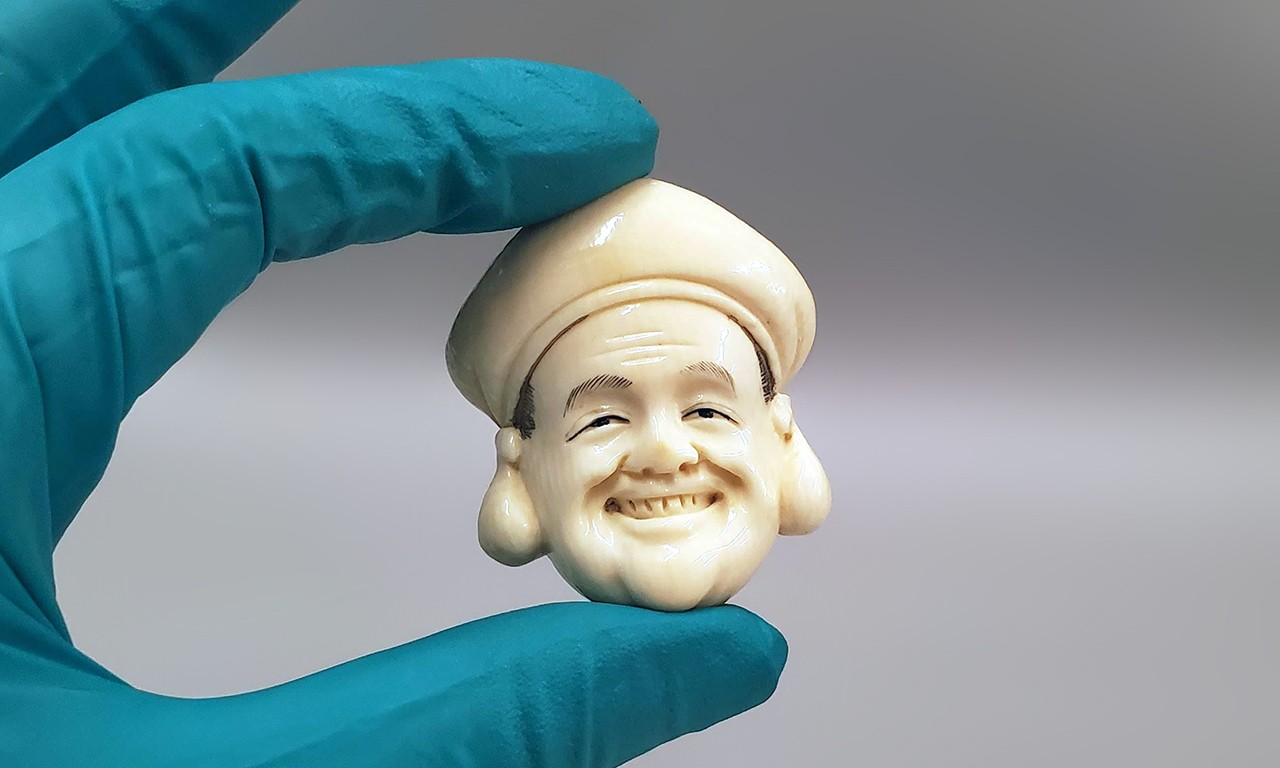 |
Netsuke of a Face, 19th to 20th Century
Japan
Ivory and pigment; 1 7/8 x 1 7/8 in.
2005.9.42
Gift of Cleo M. Stater |
On a Roll
Despite its utility, netsuke spread relatively slowly in Japan. The first published appearance was not until 1781, almost two centuries after the beginning of the Edo period, and it indicates that most readers would not have known what Netsuke were. All the same, steadily increasing demand meant that the charms’ golden age began around that same year. With the growing popularity artists and sculptors found a large enough market for their creations that they could specialize rather than create pieces on the side and workshops dedicated just for Netsuke sprang up almost overnight. The positive feedback loop prompted wonderfully inventive creation.
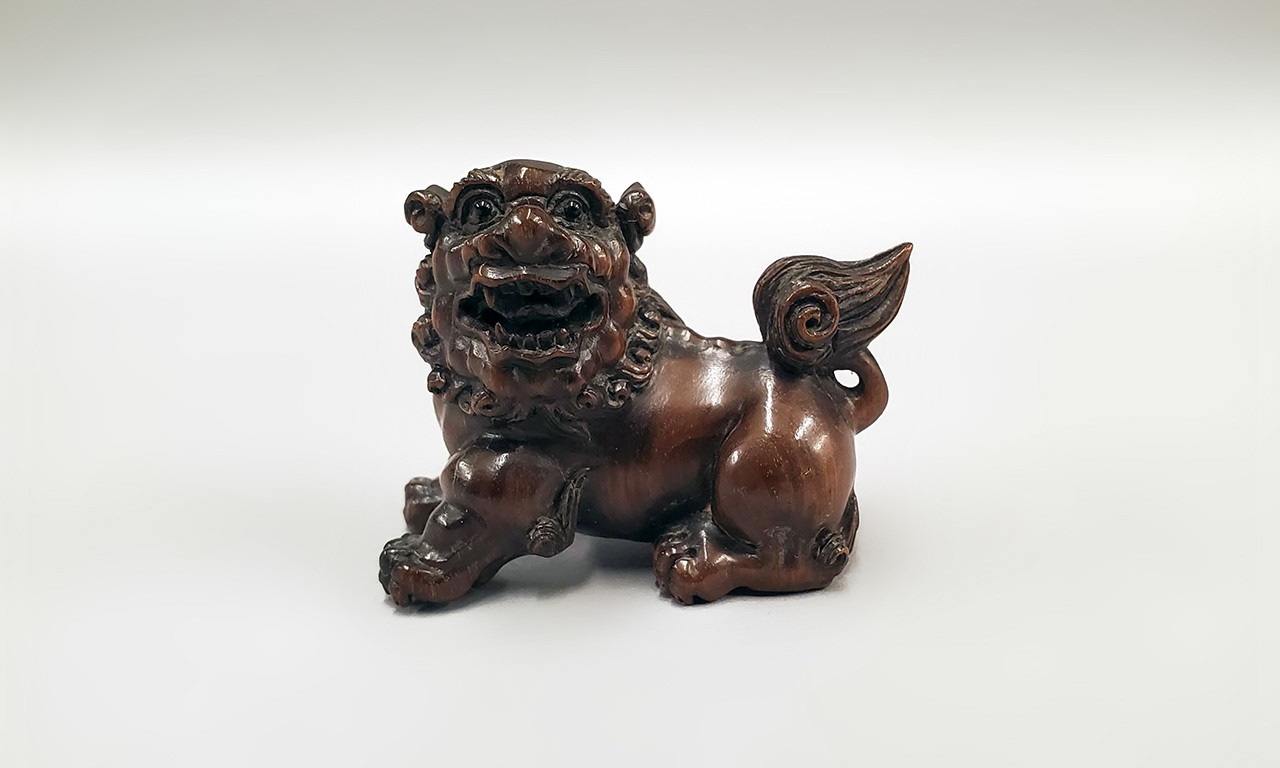 |
Netsuke of a Komainu, 19th to 20th Century
Japan
Wood; 1 x 2 in.
2005.9.60
Gift of Cleo M. Stater |
Perry Charming
Sadly, it did not last. With Commodore Perry’s forced opening of Japan’s ports to trade with the West in 1853, there was a major influx of Western clothing and by extension pockets. Like most traditional arts, the carving of netsuke never ceased altogether and continued in a limited capacity mostly for foreign consumption as curios. A growing market for high quality pieces ensured that trained craftsmen have continued to have work and train apprentices to the modern day. However, now that they do not need to be worn, many of the required characteristics such as being rounded and having one flattened side have disappeared. You would not find anyone walking the streets of Tokyo with netsuke today, but the spirit of the art form lives on. Experts have argued that the popularity of dangling phone charms in Japan was directly related to the traditional art of netsuke.
Text and images may be under copyright. Please contact Collection Department for permission to use. Information subject to change upon further research.



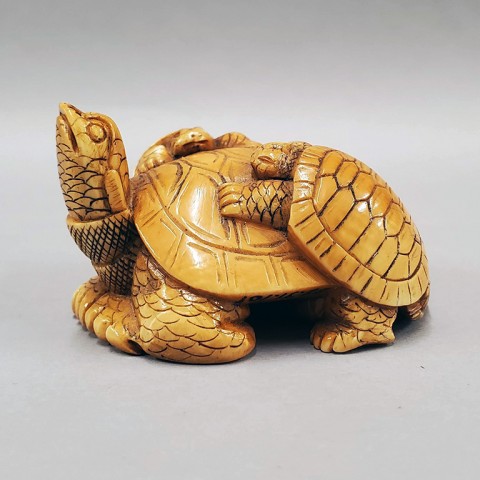
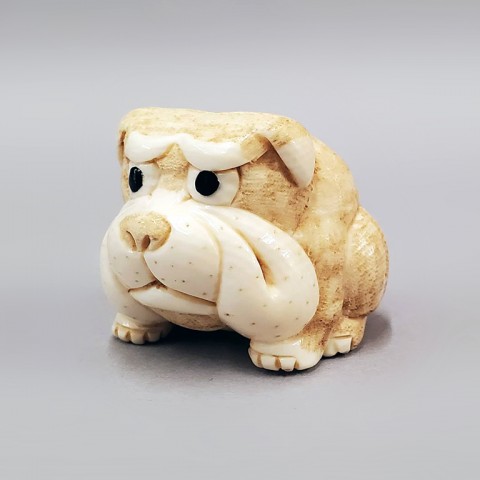
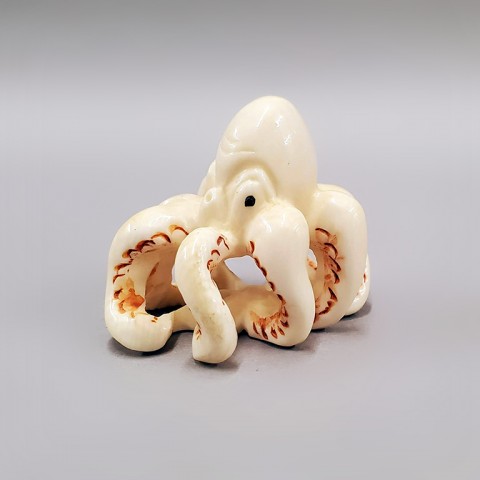
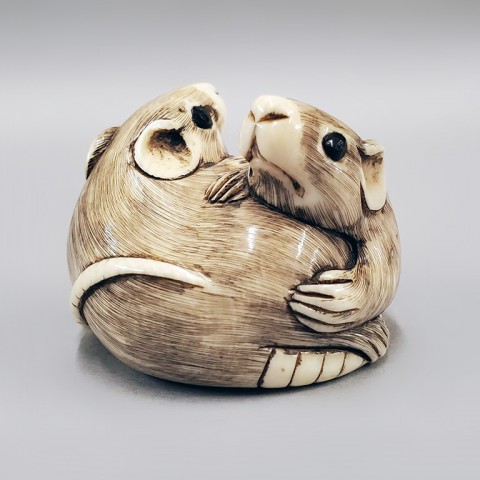


Comments 1
A most informative article! Thanks so much.